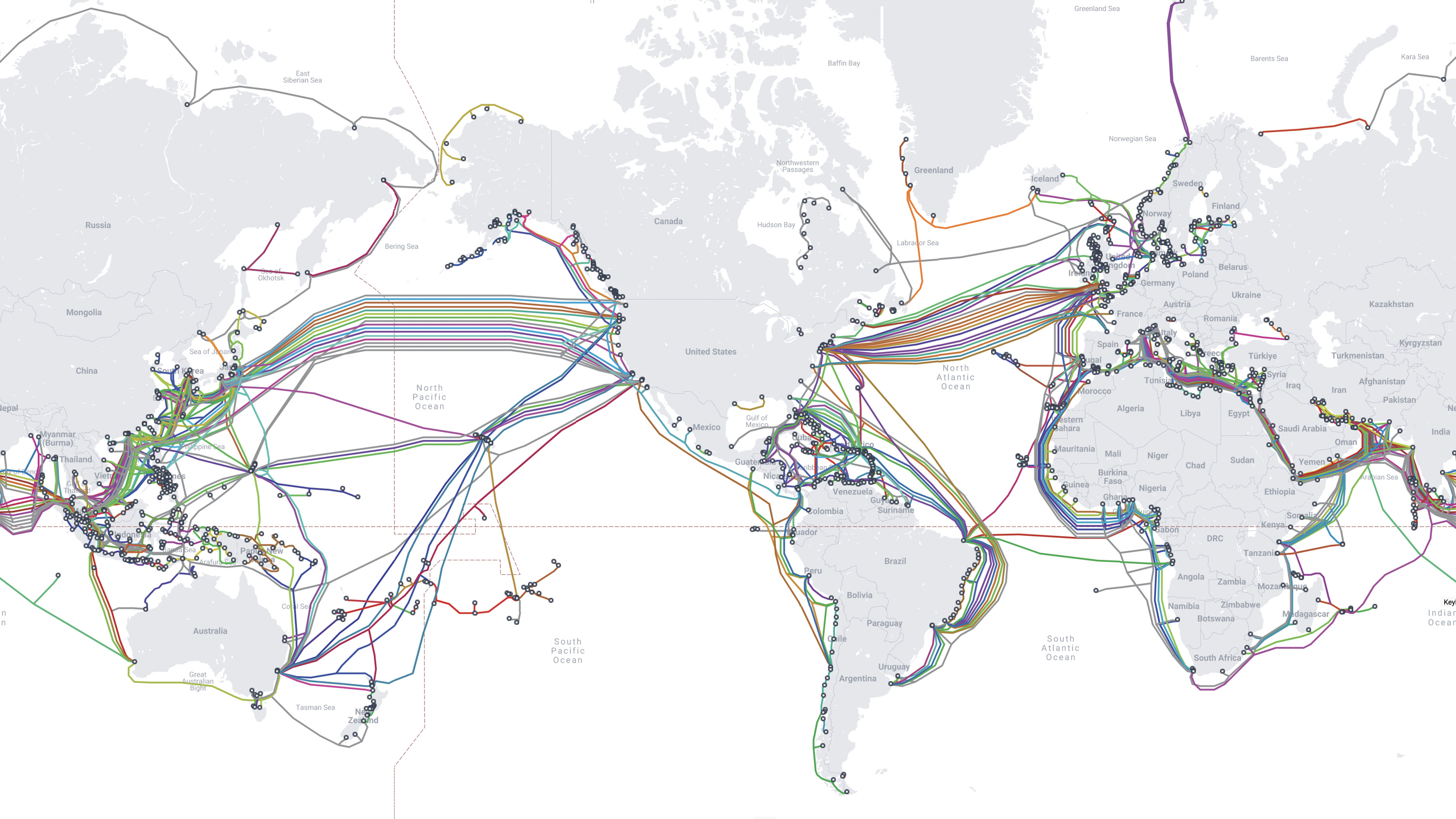These underwater cables can improve tsunami detection
Telecom companies have long resisted letting scientific sensors piggyback on their subsea cables—until now.

The residents of Vanuatu, a clutch of islands in the South Pacific, are no strangers to flooding. The ocean floor around them is frequently shaken by tsunami-triggering earthquakes.
Some advance warning could give residents enough time to get to higher ground before tsunamis strike, saving lives. But the world’s 65 active deep-ocean buoys, which are designed to detect the waves, are too sparsely distributed to provide that type of warning for Vanuatu.
The Joint Task Force for Science Monitoring and Reliable Telecommunications (SMART) Subsea Cables, a United Nations initiative, aims to solve that problem by equipping new commercial undersea telecom cables with simple sensors that measure pressure, acceleration, and temperature. The sensors could be added to the fiber-optic cables’ signal repeaters—the watertight cylinders full of equipment that are used to amplify signals every 50 kilometers or so. With cables providing for the sensors’ power and data transfer needs, scientists could collect information about the seafloor at an unprecedented scale—and pass on data about potential tsunamis far faster than is currently possible.
Adding sensors to undersea cables isn’t a new idea. Bruce Howe at the University of Hawaii, for example, who chairs the task force, operates the deepest science observatory in the world using an abandoned telecom cable located 100 kilometers north of Oahu. But convincing the $5 billion-a-year subsea telecommunications industry to integrate scientific sensors into the expensive hardware it installs has been an uphill battle for a decade, Howe says.
A big part of the challenge is that a repeater needs to be pressurized against conditions kilometers underwater. Adding external sensors that must be powered by—and communicate with—the repeater complicates the design. But last year Subsea Data Systems, a startup with funding from the US National Science Foundation, built a prototype repeater that showed it could be done. This year the technology is scheduled to have its first true “wet” demonstration when three test repeaters are deployed off the coast of Sicily. Governments—and companies—are starting to get on board. The major telecom cable company Alcatel recently announced it would have SMART cable technology ready by 2025. That same year, Portugal plans to begin work on CAM, a €150 million SMART cable project to connect Lisbon with the islands of Madeira and the Azores. The European Union has designated €100 million for digital connectivity infrastructure, including these types of cable projects.
These are heartening developments for scientists interested in expanding our ability to study the changing ocean, something that is currently done mostly from space and by research ships.
And if the technology comes to Vanuatu and nearby New Caledonia, it could mean a big change in public safety. The two small island groups are separated by an area where one section of ocean floor is actively diving beneath another, causing those frequent earthquakes and tsunamis. Residents may have a few minutes, or even just seconds, to respond to a tsunami alert. According to new modeling by the task force, presented at the American Geophysical Union conference in Chicago in December, a SMART cable across this “subduction zone” could extend that lead time to 12 minutes. It would also provide a second high-speed connection to the outside world for Vanuatu, reducing the risk of communication blackouts like the one that occurred last year in Tonga when a volcanic eruption severed that country’s only telecom cable.
“If we can give a community even five or 10 minutes of additional time, that can make a huge difference,” says Laura Kong, a member of the task force and director of the International Tsunami Information Center, a joint effort of UNESCO and the US National Oceanic and Atmospheric Administration.
Researchers have high hopes—and big plans—for SMART cables. In addition to the idea of a Vanuatu–New Caledonia cable, they are proposing projects in New Zealand, the Mediterranean, Scandinavia, and even Antarctica.
“This is a first step in achieving a long-term vision of instrumenting the ocean seafloor for climate and early-warning purposes,” says Howe. “This is the first time the deep ocean would be sort of opened up in this way.”
Christian Elliott is a freelance science journalist based in Chicago.
This story was updated on 30 June to correct the description of New Caledonia.
Deep Dive
Computing
2023 Global Cloud Ecosystem
A global survey finds cloud investment becoming a mainstay for technology development and operational efficiency
Human brain cells hooked up to a chip can do speech recognition
Clusters of brain cells grown in the lab have shown potential as a new type of hybrid bio-computer.
Quantum computing is taking on its biggest challenge: noise
For a while researchers thought they’d have to make do with noisy, error-prone systems, at least in the near term. That’s starting to change.
We need a moonshot for computing
The US government aims to push microelectronics research forward. But maintaining competitiveness in the long term will require embracing uncertainty.
Stay connected
Get the latest updates from
MIT Technology Review
Discover special offers, top stories, upcoming events, and more.